One of the biggest complaints I hear from parents, caregivers, and teachers in regard to sensory bins is the clean-up! We all know the benefits of sensory bins must surely outweigh the potential mess they can make, right? Instead of choosing to forgo the sensory bin experience, learn how to clean up sensory bins in a snap instead. A couple of easy tricks and tips will have you loving sensory bins in no time!
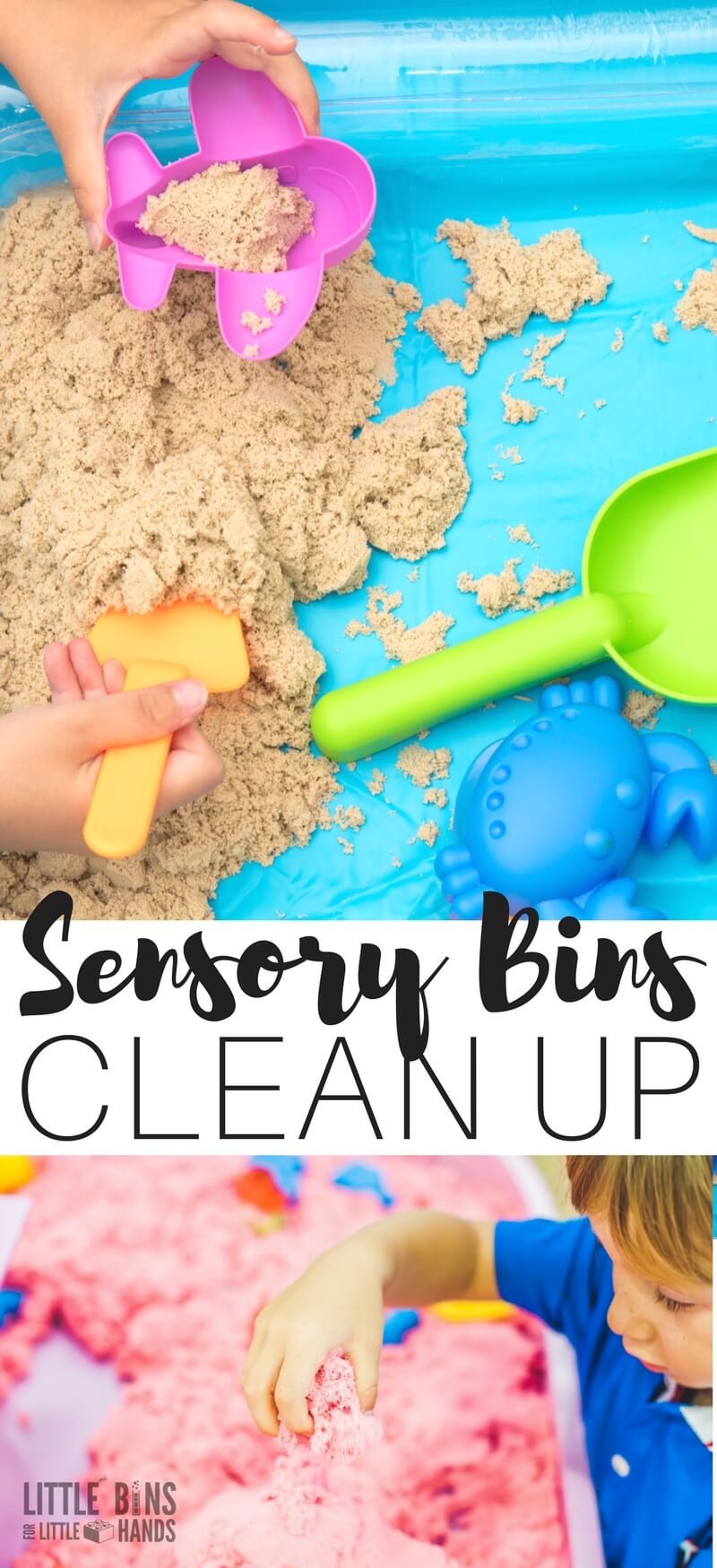
The Benefits Of Sensory Bins
Are sensory bins worth it? Yes, they are worth it. The more basic you keep the sensory bin, the better off you are. Remember, you create a tactile experience for your kids, not a Pinterest image. While we have fantastic pictures of sensory bins, they only stay that way for a minute!
Sensory bins are awesome hands-on tools for children to learn about their world and senses! Sensory play may calm a child, focus a child, and engage a child.
Here’s what children can learn from sensory bins:
Practical Life Skills ~ Sensory bins let a child explore, discover and create play using practical life skills (dumping, filling, scooping) and learn valuable play skills.
Play Skills {emotional development} ~ For both social play and independent play, sensory bins allow children to play cooperatively or side by side. My son has had many positive experiences with other children over a bin of rice!
Language Development ~ Sensory bins increase language development by experiencing all there is to see and do with their hands, which leads to great conversations and opportunities to model language.
Understanding 5 Senses ~ Many sensory play bins include some of the 5 senses! Imagine a bin of brightly colored rainbow rice: touch the loose grains against the skin, see the vivid colors as they mix together, and hear the sound of sprinkling over a plastic container or shaken in a plastic egg!
Did you add a scent like vanilla or lavender? Please do not taste uncooked rice, but there are plenty of sensory play options that you use edible ingredients like our worms in magic mud!
However, sometimes sensory bins can create a little or a lot of mess! We have you covered. Read on for tips and tricks for making setting up and packing away sensory bins much easier!
Get Your Free Quick Start Sensory Bin Guide
Sensory Bin Clean Up Tricks
1. Relax! Mess Is Going To Happen
The first thing I want to stress over anything else is that MESSES ARE GOING TO HAPPEN! Yes, that’s right! Messes are going to happen to even the most well intentioned plan of them not happening. Be prepared to find your happy place when they do happen and learn from the situation instead.
I don’t have the end all, be all secret to preventing sensory bin messes in your house or classroom, but I can share some easy sensory bin clean up tricks to help make it a little more manageable.
2. Use A Large Sheet
Use a large sheet, even a king size one if you need to so you can really cover the floor area. Place your sensory bin, tray, or table in the middle!
When your kids are done enjoying the sensory bin, fold the corners of the sheet into the middle, pick up, and dump contents into the trash or back into the bin if applicable. This works nicely for dry sensory bin fillers like colored rice.
3. Use A Shower Curtain
Use a dollar store shower curtain to cover the floor. Now this trick is especially nice for bins filled with water, shaving cream, pudding, and any other messy style sensory bins that would soak right through a sheet. Rinse or hose off when finished!
Even if you have a particularly neat kid, the contents of the sensory bin will undoubtedly fly out of the bin from time to time. It even happens to adults too! However, you can encourage gentle play and model gentle play behaviors for your kids. It’s up to you to set the boundaries of what you allow and don’t allow.
4. Kiddie Pool
Use a kiddie pool to contain the mess. Sensory bin goes into the kiddie pool. Kids go into the kiddie pool, and the mess is really contained!
5. Go Outdoors
Take it outside but me mindful of what you are spilling into your lawn that could make wildlife sick. Opt for a birdseed bin or take water sensory bins outdoors. Great opportunity to make a mud bin or use fillers like pudding that will wash away.
6. Use A Large Bin or Container
The biggest problem I encounter with sensory bin mess is not using the right size bin. When they say size doesn’t matter, that’s fine for older kids! But for younger kids the size of the container can make the biggest difference to how much mess there is to clean up.
Consider the size if you want to learn how to clean up sensory bins in a snap!
Those under-the-bed storage bins are awesome for holding sensory fillers and a small kid.
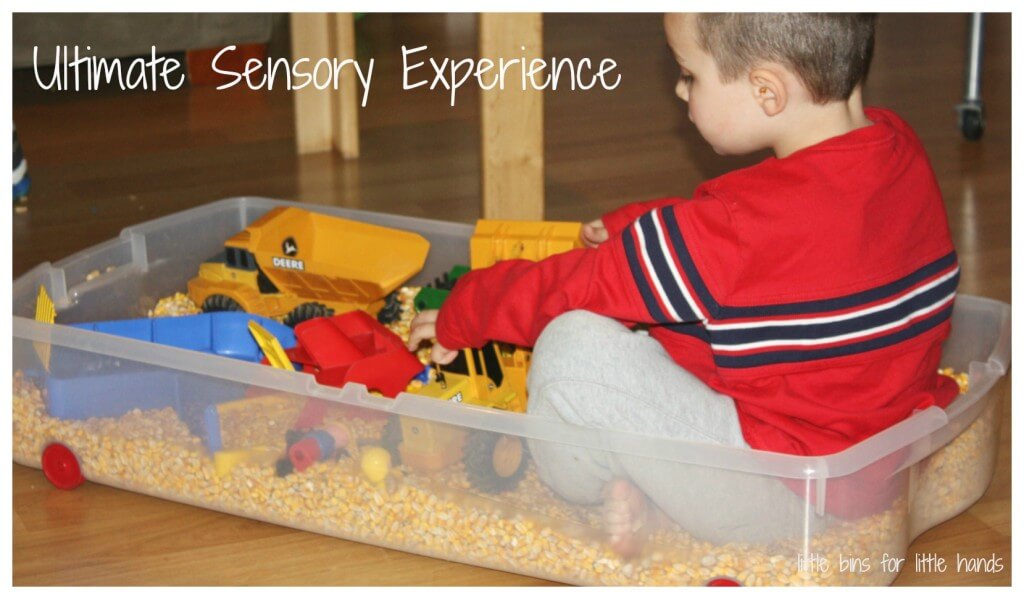
Also, some large sensory tables or tubs make creating sensory bins a breeze! They are a bit of an initial investment but wonderful for sensory play.
My son enjoyed standing at his sensory bins. They also allow you to add a good amount of filler for lots of scooping without worrying too much about making a mess.
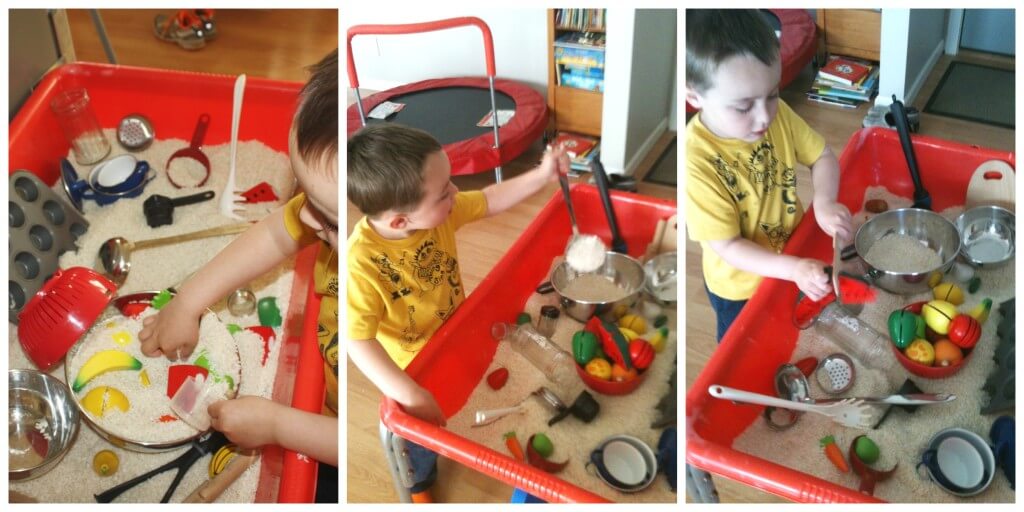
We also use a generous but more manageable size bin which has easily become one of our favorites due to its lower sides but hefty capacity. This is a Sterilite 25 QT bin with the dimensions 24 x 15 x 6. This one was our arctic ice melt and sensory bin.
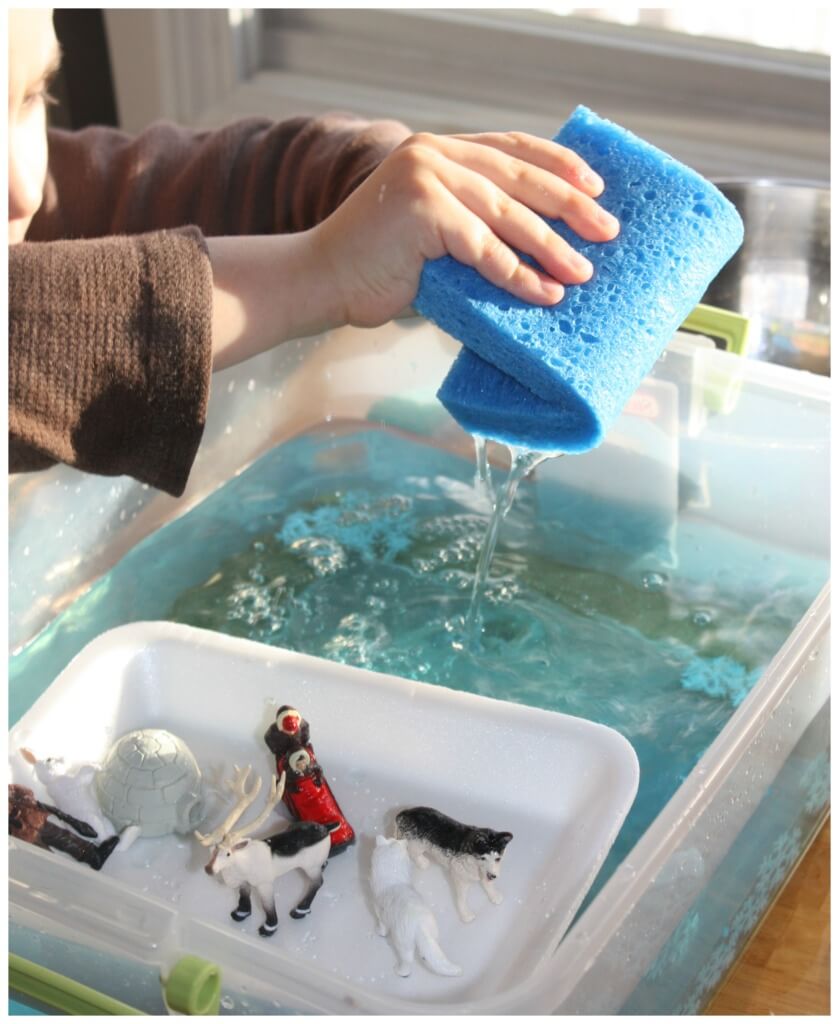
7. Choose The Right Sensory Bin Filler
There’s nothing messier then giving the wrong type of sensory play material to a kid. If you really want to learn how to clean up sensory bins, make sure you choose a sensory bin filler appropriate to the child’s age. This comes in handy when you think about whether the kid will also try to eat your sensory bin filler.
CHECK IT OUT! Best Sensory Bin Fillers
Very fine fillers like rice and sand can scatter everywhere as do dry beans, but little kids fingers can easily pick up dry beans over tiny rice pieces. A mini dust pan and brush are a must have item to pair with your sensory bin, and there’s not time like a spill to show your kids how to use one!
8. Sit or Stand
Some kids may do better standing and playing with sensory bins, while others may do better sitting. Choose a surface that allows your kids to either comfortably sit or stand and play is ideal. A kid’s size table or coffee table is often ideal. Not all kids feel comfortable sitting on the floor.
9. How Many Kids?
Your bin size and the number of kids you expect to play with at once should also be considered. How many kids at a time? Even our largest red sensory table works best with only 3 kids, maybe four at the most! An under-the-bed container is good for two, maybe three at the most. Our smallest bin, 1-2 kids, is best.
Check Out These Helpful Sensory Bin Resources
There’s so much more to learn about sensory bins and sensory play.
- Sensory Bin Ideas and Themes
- Best Sensory Bin Fillers
- Non Food Sensory Bin Fillers
- Rice Sensory Bin Ideas
- How To Set Up A Sensory Bin
- Sensory Play Recipes You Can Use
Click on the image below or on the link for more fun and easy sensory activities for kids!


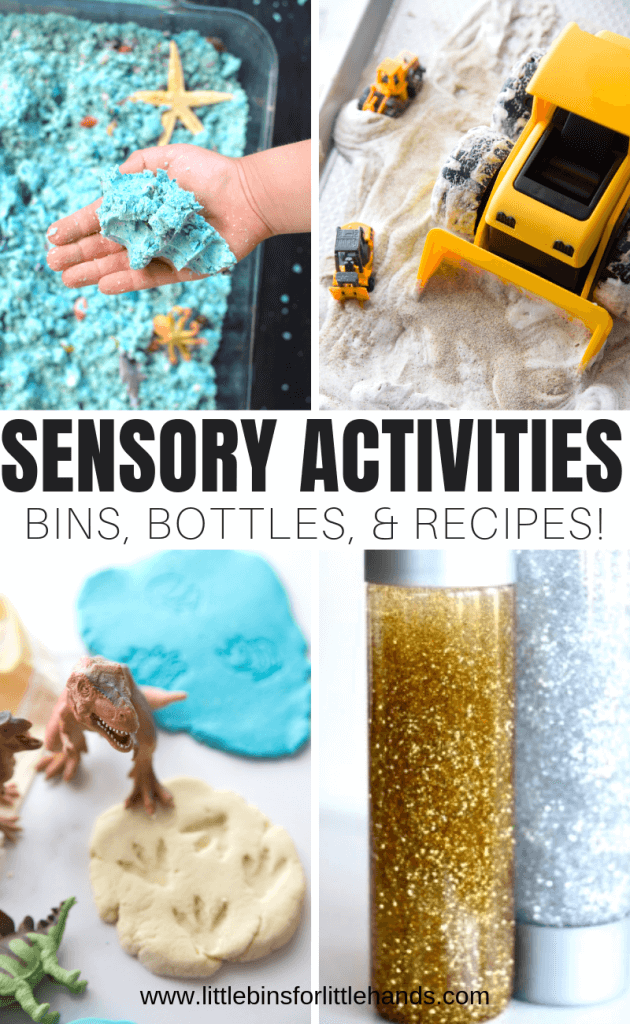






One Comment
Comments are closed.